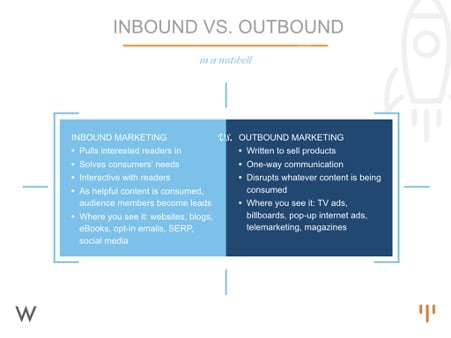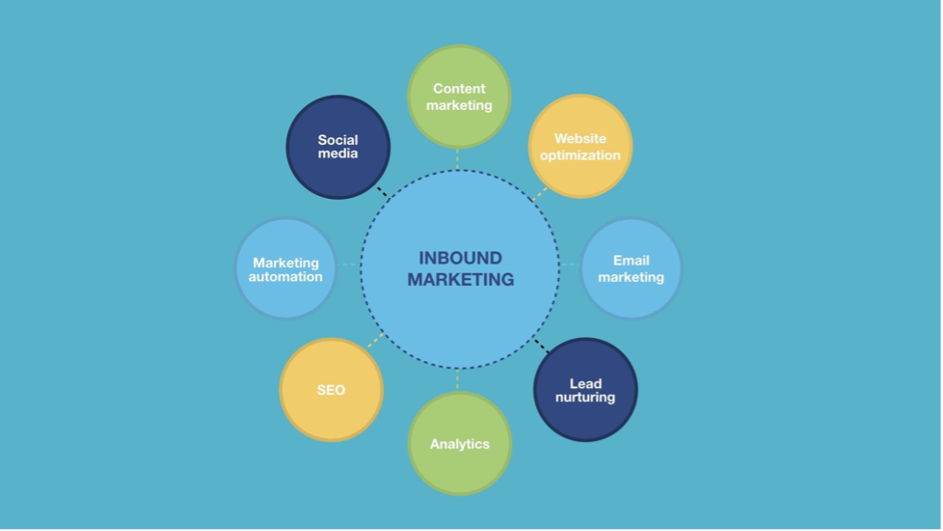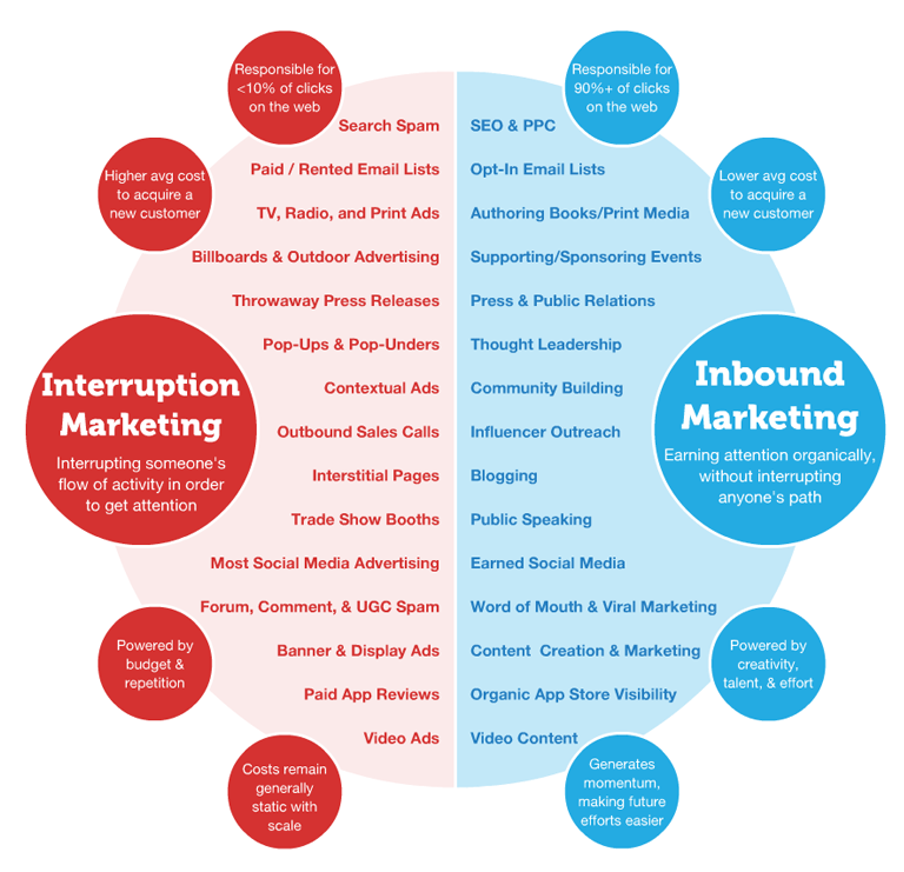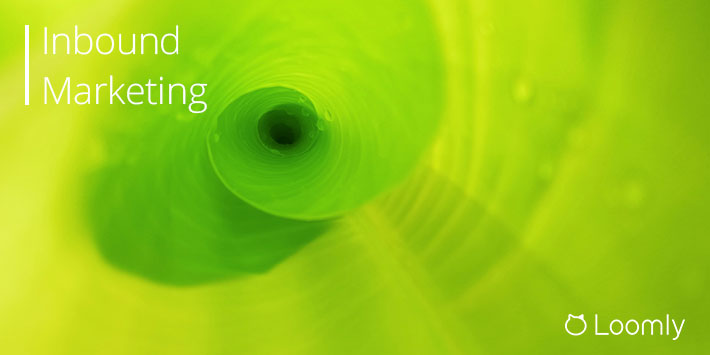Inbound Marketing FAQ
The concept of inbound marketing was first coined by HubSpot’s co-founder and CEO, Brian Halligan, in 2005. But it wasn’t until 2012 before it really started to grow.
Nowadays, it’s become widely recognized as the go-to marketing strategy.
But you may be wondering what the difference between inbound marketing and outbound marketing is? And, more importantly, does inbound marketing work?
Read on as the Loomly Team answers those and many more frequently asked inbound marketing questions.
TABLE OF CONTENTS
- What is inbound marketing?
- What does inbound marketing mean?
- What is the difference between inbound marketing and outbound marketing?
- Is content marketing inbound marketing?
- Is email marketing inbound marketing?
- Is SEO inbound marketing?
- Is PPC inbound marketing?
- Are events inbound marketing?
- Does inbound marketing work?
- Who is inbound marketing for?
- What does an inbound marketing expert do?
- What are the pros and cons of inbound marketing?
- What are the five principles of inbound marketing?
- How do you implement inbound marketing?
- How much does inbound marketing cost?
What is inbound marketing?
Inbound marketing is a business methodology that attracts customers by creating valuable content and experiences tailored to them. While outbound marketing interrupts your audience with content they don’t always want – such as ads – inbound marketing forms connections they are looking for and solves problems they already have.
What does inbound marketing mean?
Inbound marketing focuses on growing your organization by building meaningful, lasting relationships with consumers, prospects, and customers. It’s about valuing and empowering these people to reach their goals at any stage in their journey with you.
The inbound methodology can be applied in three ways:
- Attract: drawing in the right people with valuable content and conversations that establish you as a trusted advisor with whom they want to engage.
- Engage: presenting insights and solutions that align with their pain points and goals, so they are more likely to buy from you.
- Delight: providing help and support to empower your customers to find success with their purchase.
What is the difference between inbound marketing and outbound marketing?
Marketers use two distinct strategies to reach prospects: inbound marketing and outbound marketing. Here are the key differences between them:
Inbound marketing
- Pulls interested readers in
- Solves consumers’ needs
- Interacts with readers
- As helpful content is consumed, audience members become leads
- Where you see it: websites, blogs, ebooks, opt-in emails, SERP, social media
Outbound marketing
- Pushes messaging at everyone
- Written to sell products
- One-way communication
- Disrupts whatever content is being consumed
- Where you see it: TV ads, billboards, pop-up internet ads, telemarketing, magazines

Credit: Weidert
Is content marketing inbound marketing?
Content marketing is a core strategy that comes under the umbrella of inbound marketing.
The CMI defines content marketing as:
“Content marketing is a strategic marketing approach focused on creating and distributing valuable, relevant, and consistent content to attract and retain a clearly-defined audience — and, ultimately, to drive profitable customer action.”

Credit: Weidert
Inbound marketing is a comprehensive strategy for attracting, qualifying, nurturing, closing, and delighting prospects. If you don’t use all of the inbound practices, you’re not reaching your full marketing potential.
Is email marketing inbound marketing?
Email marketing is another inbound marketing strategy that starts when a subscriber willingly gives you their contact details so that you can send them promotional content via email.
Inbound marketing aims to attract organic customer interest, using unpaid avenues like social media, search, and content channels. It then uses email marketing to send emails with promotional content after a prospect has subscribed.
Is SEO inbound marketing?
SEO is a form of inbound marketing.
SEO or “search engine optimization” focuses specifically on improving organic traffic from search engine results. Search engine algorithms read the code and content on a site and determine their rankings based on relevancy. But SEO isn’t just about traffic – the ultimate goal is still turning visitors into customers.
Is PPC inbound marketing?
Many argue that PPC is a form of outbound marketing because it’s both paid and an advert. But PPC, like SEO, is contextual and query-triggered – it’s inbound marketing.
PPC is a part of inbound marketing as it provides the answer when someone is looking for it. In comparison, outbound marketing (or interruption marketing) puts an ad for a product or service in front of someone when they are NOT looking for it.
For example: if you own a local pizza joint and you go around sticking fliers and menus under people’s windshield wipers and rubber-banding them to their doorknobs all the time, that’s outbound or interruption marketing, because you’re coming to them and getting in their face, even though you have no idea whether they want pizza or even like pizza.
But if someone in your area searches for “pizza” on their mobile phone at 5 pm, and they get an organic local listing or a mobile PPC ad from your business, that’s contextual. Neither option is interrupting the flow of what they’re doing. Either way, you’re giving them the information they were already looking for.

Credit: Moz
Are events inbound marketing?
Events are part of outbound marketing, along with more traditional tactics such as direct mail and telemarketing.
On the other hand, inbound marketing is a strategy that utilizes many forms of pull marketing—content marketing, blogs, events, search engine optimization (SEO), social media, and more—to create brand awareness and attract new business. Whereas outbound marketing seeks out customers, inbound marketing focuses on visibility, so potential buyers come to you.
Does inbound marketing work?
Yes, inbound marketing really works as long as you’re willing to put in the time and effort.
Unfortunately, when outbound marketing isn’t working the way you want it to, there’s no fast and easy way to remedy it because you only know it didn’t work after you’ve paid for your placements and counted your leads.
Inbound marketing requires patience, creativity, and optimization before seeing results. But sticking with it will help you build a better, more robust marketing strategy.
According to The Growth Company, inbound marketing generates 54% more leads than traditional (outbound) marketing tactics. Furthermore, according to Impact, leads generated from inbound marketing strategies cost 61% less on average than outbound leads.
Who is inbound marketing for?
Let’s examine a few scenarios to see if inbound marketing is right for you:
Is my company big enough to benefit from inbound marketing?
Companies of all shapes and sizes are using inbound effectively.
Are my customers right for inbound marketing?
Inbound marketing works best for companies whose customers have a high lifetime value and take time to consider their purchase decision.
I need a long-term, sustainable source of leads and customers
If you are finding that sources of leads and customers that you have relied on for years are disappearing, you may need a new channel to sustain or grow your business. Inbound marketing can help meet those business goals.
I need results fast
Inbound marketing isn’t magic – it’s a proven method that has cumulative benefits. It’s a long-term investment that takes time, usually between four and eight months, to see results.
Do I have the resources to make inbound marketing work?
The inbound marketing approach requires an honest and firm commitment. Although you can reduce the amount of time that you spend pursuing inbound leads by working with an agency, you still need to be committed to inbound marketing to make it work. For example, you’ll need to commit to:
- Approving or writing content
- Analyzing data about your customers and writing buyer personas
- Engaging with prospects on social media
- Creating and crafting offers
- Designing landing pages and writing copy
- Researching topics and keywords
The list continues, but this gives you a taste of some of the marketing activities that go along with inbound.
What does an inbound marketing expert do?
An inbound marketing manager’s responsibilities include:
- Build and manage a rich content/editorial calendar that attracts a qualified audience to our owned properties (including blog posts, whitepapers, ebooks, reports, webinars, infographics, etc.).
- Grow new leads, including marketing-qualified leads, by converting site traffic through calls-to-action, landing pages, and lead generation content (including offers).
- Optimize our marketing automation and lead nurturing processes through email, content, and social channels.
- Establish closed-loop analytics with sales to understand how our inbound marketing activity turns into customers, and continually refine our process to convert customers.
What are the pros and cons of inbound marketing?
Here are the pros and cons of inbound marketing:
Inbound marketing advantages:
- It organically generates leads for your company
- You become a thought-leader and authority
- It’s more budget-friendly than outbound
- It aligns with current consumer behavior
Inbound marketing disadvantages:
- It takes a long time to produce a ROI
- You must have a wide range of skills or team members
- Measuring inbound can be a pain in the butt
What are the five principles of inbound marketing?
The five core principles of inbound marketing are:
- Standardize: make it scalable
- Contextualize: make it relevant
- Optimize: make it better
- Personalize: make it special
- Empathize: make it human
How do you implement inbound marketing?
Here are six inbound marketing techniques any business can use:
- Give away a free guide that is directly related to your business.
- Pick one or two keywords, and optimize the heck out of them.
- Build your personal brand.
- Ask and answer questions on social media.
- Create an email signup.
- Guest blog.
How much does inbound marketing cost?
Inbound marketing prices vary, though most small-to-midsize businesses (SMBs) working with an inbound marketing agency invest $2,500 to $12,000 per month — that’s $30,000 to $144,000 per year — while SMBs managing their inbound marketing in-house spend $20,000 per month — or $240,000 per year — on inbound marketing.
As a comparison, Protocol 80 reckons inbound marketing pricing costs $4,000 to $15,000 per month when working with an inbound marketing agency.
The more you’re able to invest, the more your agency can do for you, and the faster you will see results.

Manage all your social media accounts in one place.
Craft, schedule, & auto-post content to all your social channels, then track analytics and manage interactions from a single, easy-to-use dashboard.
Inbound Marketing in a Nutshell
Inbound marketing uses many forms of “pull” marketing – such as content marketing, blogs, events, search engine optimization (SEO), and social media – to build brand awareness, generate leads, attract new customers, and develop meaningful relationships.



